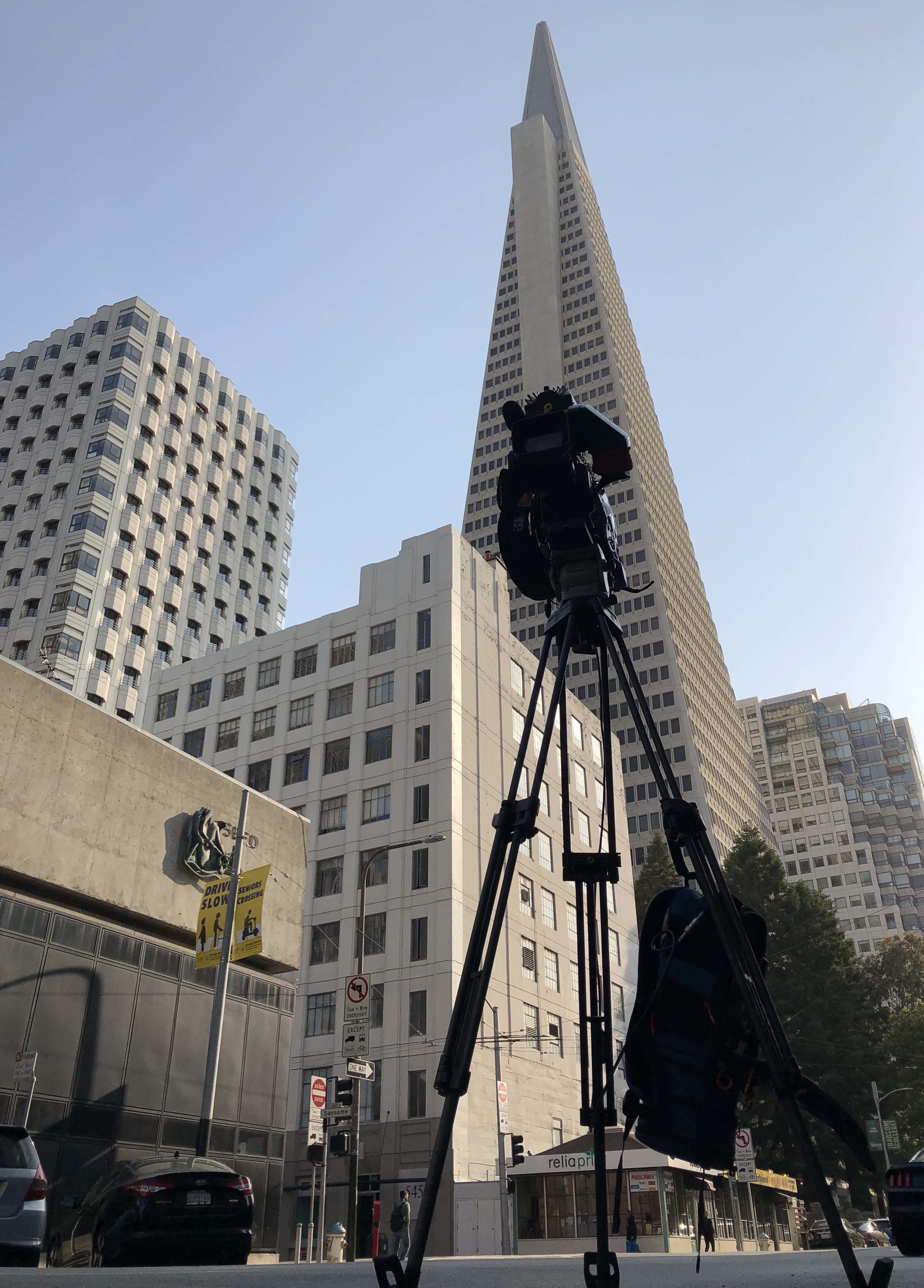Have a plan
A good reporter is an organized reporter. There are so many variables we can't control, it's important to be in charge of the ones we can. In this case, I had to control my schedule for writing and editing and performing the live shot because I was in both the 5 p.m. and 6 p.m. shows.
Live shot with protest in the background.
Today's story was about the #AbolishICE protest that popped up overnight at the federal immigration office in downtown San Francisco. Protests are a dime a dozen in the Bay Area, but this one had a little extra in that immigration is a hot topic. Is what the folks protesting think becoming mainstream?
The three elements I tell my students to look for in a story are:
- So what (what difference does it make): protesting ICE (Immigration and Customs Enforcement) is becoming ever more popular as mainstream politicians begin to support the idea. One of them is California Senator Kamala Harris, who says the agency needs to start over.
- Real people (the people living the story): the protesters
- Show me, don't tell me (video): the protest.
I had all my interviews completed by 3:30 p.m., but that still meant I had to write and edit two different stories - one for each show. Given that after the 5 p.m. live shot, I'd only have 45 minutes before I had to be on in the 6 p.m. newscast, I realized I had some planning to do. I forced myself to not only finish editing the 5 p.m. package before the 5 p.m. show, but to also finish writing the 6 p.m. package before the 5 p.m. show. That way I'd have time to edit the 6 p.m. story after I'd finished the 5 p.m. live shot. This is not rocket science, but beginning reporters should think ahead and know you can't just finish one newscast before beginning to work on the next one.
The protester interviewed for the story.
"Just present the facts and let the viewers decide." Students in my class hear that all the time. That's what our job is as journalists - not to sway opinion but to present ideas to the audience so it can judge for itself what's believable and worthy and what's not. The protester I interviewed today was a self-described anarchist who blamed racism for a lot of the immigration problems we have in the United States. Her ideas are controversial. But, I thought it was important to let the viewers to learn what the mindset is of the people who are protesting and calling for an end to border control and enforcement.
There's lots of equipment a TV news crew needs, some of it new, some of it quite traditional. Today I worked with videographer Rick Villaroman and we used the new stuff. He also showed me the old - but still useful and necessary - stuff.
New: LiveU. These are relatively new units that aggregate cell phone signals from various carriers (Verizon, AT&T, for example) and allow you to go live from anywhere there's a signal. These units are small and light and can even be set up by the reporter who's performing the live shot. Wherever there is strong cell service, the smaller mobile packs work great.
Old: ENG (electronic news gathering) microwave truck. These are the ones you see in TV shows and movies all the time, with the big tower that rises up from the roof of the truck. Look closely in the background of the photos below. These units are cumbersome and expensive to buy and operate. But, unlike the LiveU, microwave trucks don't depend on anyone else. They generate their own signal so, for the most part, wherever you are and whenever you want, you can go live.
The traditional huge news van.
Microwave transmitter on top.
Here is some equipment Rick showed me that never goes out of style. What's interesting is that he feels the need to carry it with him every day. Better to have it and not need it, than the opposite.
Fire helmet and goggles. In the summer, fires are big news.
It's common for the police to launch tear gas during protests that turn into riots.
The beauty shot of the day. I call it "Two pyramids."
How often do you get a live shot location like this?
Takeaways:
- Know what's required of you and have a plan to get it done in time. Don't try to figure it out on deadlne.
- Present the facts and let the viewers decide.
- Old equipment, new equipment - TV requires a lot of stuff.






